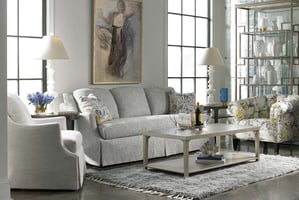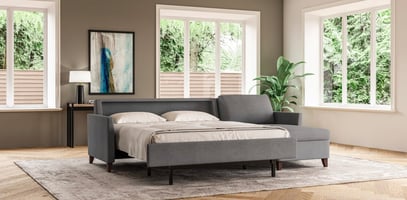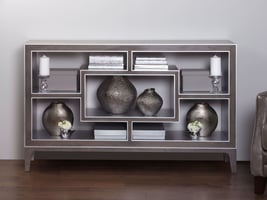Sherrill Furniture is a long-standing company, with quite the reputation as one of the leaders in...
How to Clean Glass Surfaces on Your Furniture
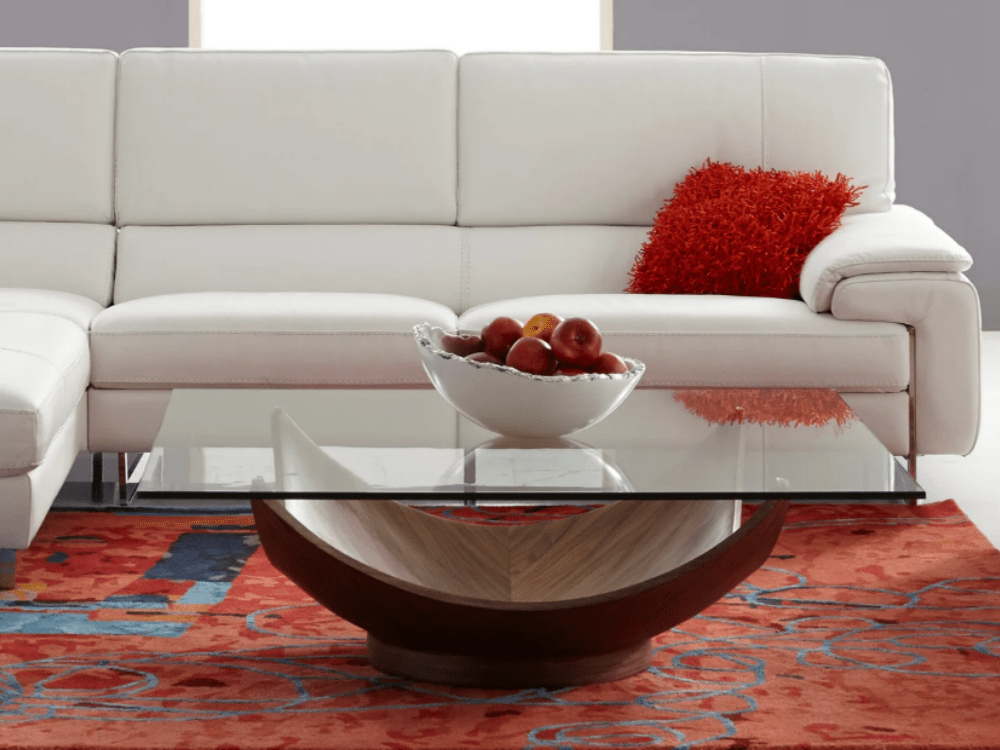
There’s something so timeless and elegant about glass furniture. Whether it’s a glass top table, a shelf or door on your cabinet, or even a mirror, glass adds a certain sophistication to any room. That’s what drew you to your glass furniture in the first place!
Glass, on the surface (no pun intended), can be quite fragile. But on furniture, it’s actually pretty durable, able to withstand elements that can wear on other materials in furniture. Because of its durability, you probably don’t need a new piece of glass furniture, but how can you make sure it stays as perfect as the day it came into your home?At McElheran’s Furniture + Design, we’ve been furnishing rooms for life since 1994. And yes, we do have a large selection of glass tables and furniture in our showroom, but you already have what you need, don’t you? We’ll definitely be here when you want to make your next purchase, but for right now, we just want to make sure you get the most out of the furniture you currently have!
In this article, our in-house designers, known as Design Guides, will take you through the regular maintenance of your glass surfaces to keep them looking pristine. We’ll also give you some expert tips from Tracy, McElheran’s Showroom Sparkle Specialist.
Before we get into it, we should note that there isn’t a ton of maintenance required with your glass-top table, cabinet, or mirror. In fact, it’s really just about cleaning it every once in a while!
How should I clean my glass furniture?
As much as glass surfaces can add a beautiful touch to your space, they can really attract dust and debris. Fingerprints are also much more obvious with glass furniture. Luckily, there are ways to tackle dust build-up and other marks and spots. These steps will help you keep your glass furniture clean and streak-free.
1. Use a duster or cloth to dust
Dust may seem like an annoyance more than an actual threat to the life of your furniture, but one of the biggest culprits of tiny scratches is dust build-up!
You’ll always want to dust before you dampen a cloth or use a glass cleaner. This will ensure you’re getting all the loose dirt off the surface first, so you don't end up dragging damaging particles over the glass with a wet cloth.
A microfibre, lint-free cloth, or duster are great tools for dusting surfaces. Just be sure to not apply too much pressure while you wipe and dust your glass furniture.
You may have a regular dusting routine already but keep in mind that certain factors can increase dust in your home. Maybe your house is a new build, and there’s a lot of construction in your neighbourhood - that will certainly kick up more dust and dirt!
When it's cold and dry in the winter, carpets and linens in your home can shed and add to the debris floating around and collecting on your glass furniture.
And speaking of shedding, yes, your pets and their dander may require you to dust a bit more regularly to keep your glass surfaces clean and damage-free.
2. Wipe with a wet cloth or spray on a glass cleaner
After you’ve dusted your glass surfaces and cleaned off most of the dirt and debris, wiping your glass furniture with a wet microfibre, lint-free cloth will give you an even more effective clean.
This is the step where you’re able to tackle fingerprints and other oils that may have built up from the people in your home using your furniture.
Now, a cloth dampened with warm water may be all you need, but Tracy has personally seen drastic results from using the spray Invisible Glass. Which, by the way, is often found in the automotive department of a store.
A homemade glass cleaner that can work as well, is made up of three parts water, one part vinegar, and a squirt of dish soap.
3. Wipe clean with a dry cloth
If you just wiped your glass surface down with a damp cloth, follow it up with a dry, microfibre cloth. This will help to prevent streaks and water spots.
Tracy recommends Norwex microfibre cloths (meant for windows) to wipe over a dampened surface. As long as you wipe in one direction, you get a perfect shine – without the use of any other solutions!
And if you did spray on a solution, that trusty, microfibre cloth is a good way to wipe down the surface and dry it off.
What else can I do to keep my glass surfaces looking like new?
Use protective surfaces on your glass
Coasters, cutting boards, tablecloths, placemats, and shelf lining are all things that you can put on your glass surfaces – depending on what you’re using your furniture for.
With glass, you’re not really running a risk of heat damage or stains from food or drink dishes, but you could end up with some rings from condensation. An easy wipe with a cloth is usually all you need to get rid of that!
The main thing that you would want to protect your glass furniture from is sharp objects. So, if you do any sort of cutting or meal prep on the glass, it’s good to lay down a cutting board so you don’t leave a scratch.
Read up on the warranty of your furniture
There may be some care and maintenance recommendations under your furniture’s warranty or helpful cleaning tips. It’s also good to know the guidelines of your warranty before you take any sort of major action into your own hands.
Be careful of what you’re putting on your glass surfaces
Your glass surfaces are meant to hold your belongings, so we’d never tell you to stop doing that! Just be mindful of jagged and sharp edges, like keys or pens, that could nick or scratch a table. And if you’re putting anything heavy down, do so with care so you don’t break the glass.
What should I avoid when cleaning my glass surfaces?
Using a dirty cloth
As much as you might want to grab the wet cloth out of your kitchen sink and quickly wipe down your glass surfaces, it’s best to use a clean, unused cloth. Again, you don’t want to accidentally drag along anything that could scratch your glass or leave behind unwanted streaks.
So, you know that you want to use a clean cloth; however, you shouldn’t wash your microfibre cloths with your towels.
Tracy explains that when you do that, your cloths will pick up lint, which could get left behind on the glass you’re trying to clean. It may affect the absorption and cleaning capabilities of the microfibre cloths, too.
Using a cleaner that is not meant for glass
We get it, sometimes you’re in a hurry and you grab the closest spray bottle you can find when you’re cleaning something. Every cleaner does the same thing, right – so what does it matter?
The problem with doing that, though, is that some cleaning solutions have drastically different formulas than others. For instance, a cleaner specifically made to clean stainless steel will often have oil in it. And if you clean your glass furniture with that oily substance, your glass will be left with a greasy film.
How long should I keep my glass furniture?
As we mentioned before, glass is fragile, but it can also be a very durable part of your furniture. Unless it breaks entirely or ends up with a lot of scratches, a glass surface can last … basically forever! And it will virtually stay unchanged.
Honestly, we’d be more worried about glass going out of style than deteriorating.
So, now that you know you’re in it for the long haul, there are other ways that you can update your living space while you hang on to that beautiful piece of glass furniture. Take a look at Freshen Up the Look of Your Room: 10 Small Things That Can Make a Big Difference for some inspiration!
And when the time is right for you to add some more furniture to your home, drop by for a visit to McElheran’s! Our Design Guides look forward to guiding you through your next purchase and you can even pick Tracy’s brain for some more cleaning tips!

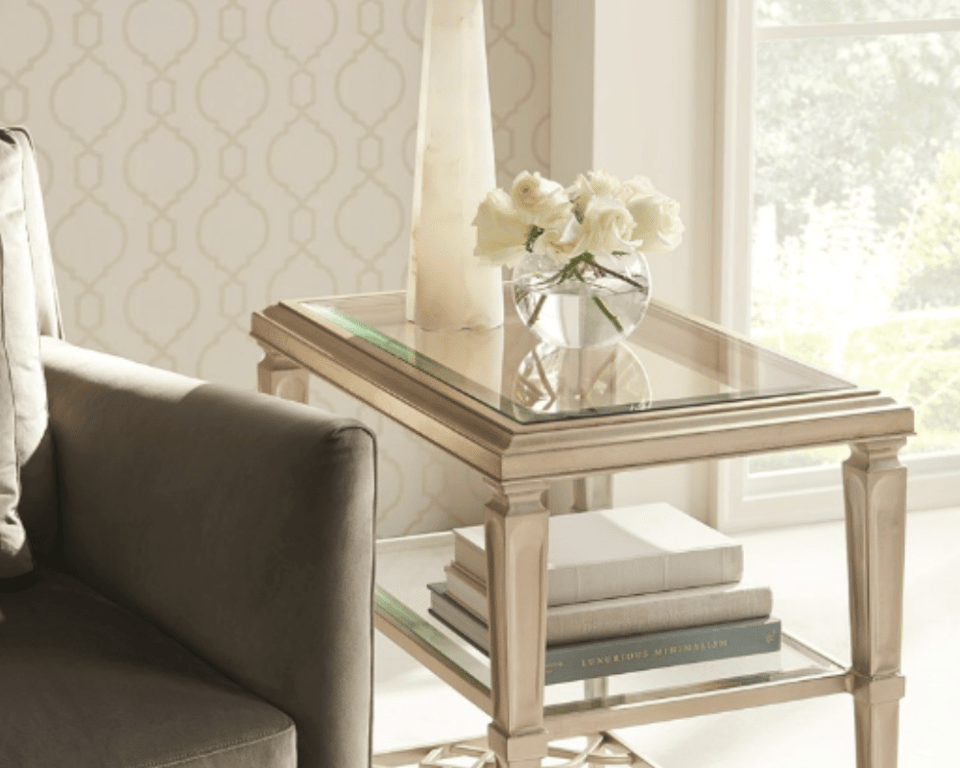
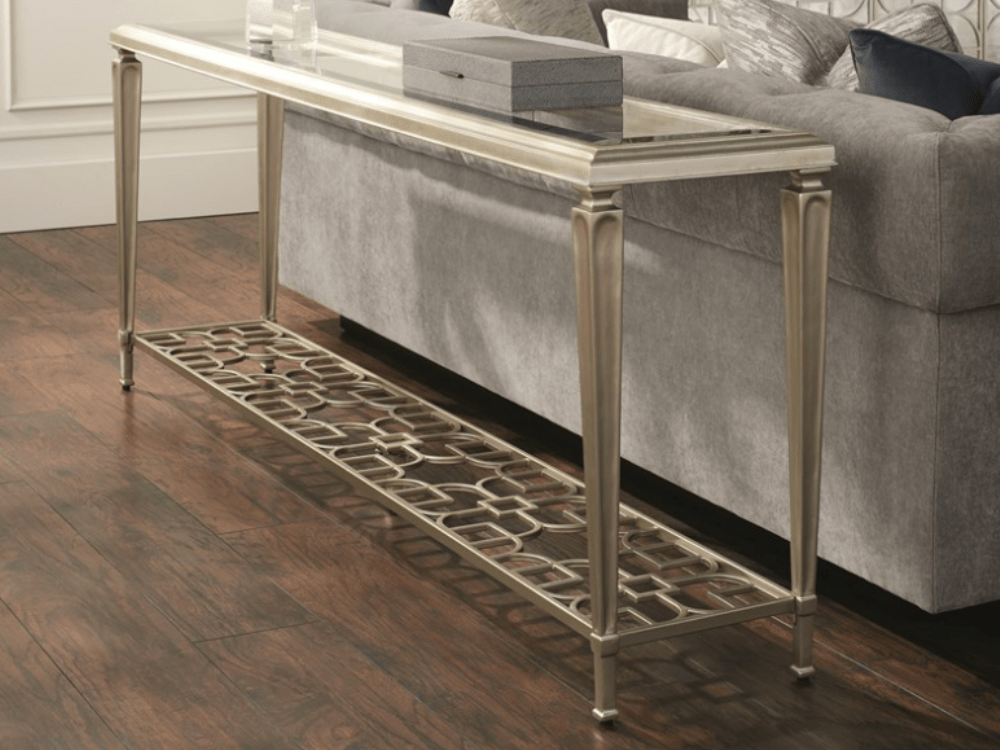
-min.png?width=800&name=DesignButton(png)-min.png)
